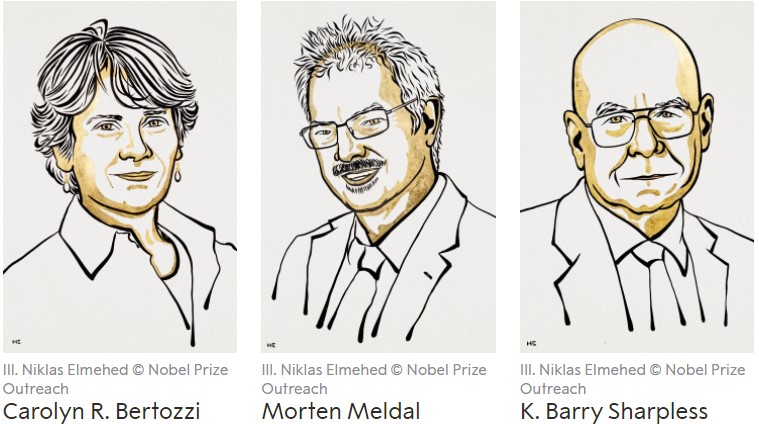The Royal Swedish Academy of Sciences has awarded this year’s Nobel Prize in Chemistry to Carolyn R. Bertozzi, Morten Meldal, and K. Barry Sharpless for their groundbreaking research works leading to “the development of click chemistry and bioorthogonal chemistry.”
Barry Sharpless is a Professor at Scripps Research, La Jolla, CA, USA. He was born in 1941 in Philadelphia and obtained his Ph.D. in 1968 from Stanford University, CA, USA. The initiative, which earned the three Scholars the 2022 Nobel Prize, was established by Barry Sharpless, who is currently receiving his second Nobel Prize in Chemistry. He developed the idea of “click chemistry” around the year 2000, which is a type of straightforward chemistry in which reactions take place rapidly, and unintended byproducts are avoided.
Morten Meldal was born in Denmark in 1954 and was awarded a Ph.D. in 1986 by the Technical University of Denmark, Lyngby, Denmark. He is currently a Professor at the University of Copenhagen, Denmark. Shortly after Barry Sharpless coined the concept of click chemistry, Morten Meldal caught the light and also presented papers on the “crown jewel of click chemistry: the copper catalysed azide-alkyne cycloaddition. Now used often, this chemical reaction is both beautiful and effective. It is used, among many other things, to map DNA, produce medications, and make materials more suited for their intended application.
Professor Carolyn R. Bertozzi, who shares one-third of the 2022 Nobel Prize in Chemistry (worth 10 million Swedish kronor), was born in the United States of America in 1966 and bagged a Ph.D. in 1993 from UC Berkeley, CA, USA. Currently, She works as a Professor at Stanford University, CA, USA. Carolyn Bertozzi advances click chemistry by creating click reactions that function in living organisms to map crucial but elusive biomolecules called glycans found on the surface of cells. Her bioorthogonal reactions, which happen without interfering with the cell’s regular chemistry, have been used by people worldwide to investigate cells and monitor biological processes.

